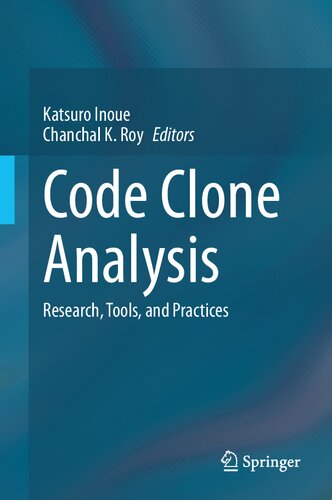

Most ebook files are in PDF format, so you can easily read them using various software such as Foxit Reader or directly on the Google Chrome browser.
Some ebook files are released by publishers in other formats such as .awz, .mobi, .epub, .fb2, etc. You may need to install specific software to read these formats on mobile/PC, such as Calibre.
Please read the tutorial at this link. https://ebooknice.com/page/post?id=faq
We offer FREE conversion to the popular formats you request; however, this may take some time. Therefore, right after payment, please email us, and we will try to provide the service as quickly as possible.
For some exceptional file formats or broken links (if any), please refrain from opening any disputes. Instead, email us first, and we will try to assist within a maximum of 6 hours.
EbookNice Team

Status:
Available4.3
16 reviewsThis is the first book organized around code clone analysis. To cover the broad studies of code clone analysis, this book selects past research results that are important to the progress of the field and updates them with new results and future directions.
The first chapter provides an introduction for readers who are inexperienced in the foundation of code clone analysis, defines clones and related terms, and discusses the classification of clones. The chapters that follow are categorized into three main parts to present 1) major tools for code clone analysis, 2) fundamental topics such as evaluation benchmarks, clone visualization, code clone searches, and code similarities, and 3) applications to actual problems. Each chapter includes a valuable reference list that will help readers to achieve a comprehensive understanding of this diverse field and to catch up with the latest research results.
Code clone analysis relies heavily on computer science theories such as pattern matching algorithms, computer language, and software metrics. Consequently, code clone analysis can be applied to a variety of real-world tasks in software development and maintenance such as bug finding and program refactoring. This book will also be useful in designing an effective curriculum that combines theory and application of code clone analysis in university software engineering courses.